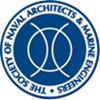Air Layer on Superhydrophobic Surface for Frictional Drag Reduction
IF 1
4区 工程技术
Q3 ENGINEERING, CIVIL
引用次数: 7
Abstract
We examined the feasibility of combining a superhydrophobic surface (SHS) and air layer drag reduction (ALDR) to achieve the frictional drag reduction (DR) shown achievable with traditional ALDR, but at a reduced gas flux to increase the achievable net energy savings. The effect of a commercial SHS coating on the gas flux required to maintain a stable air layer (AL) for DR was investigated and compared with that of a painted non-SHS at Reynolds numbers up to 5.1 X 106. Quantitative electrical impedance measurements and more qualitative image analysis were used to characterize surface coverage and to determine whether a stable AL was formed and maintained over the length of the model. Analysis of video and still images for both the SHS and painted surface gives clear indications that the SHS is able to maintain AL consistency at significantly lower gas flux than required on the non-SHS painted surface. Hydrophobicity of the surfaces was characterized through droplet contact angle measurements, and roughness of all the flow surfaces was measured. The results from these preliminary experiments seem to indicate that for conditions explored (up to Rex = 5.1 X 106), there is a significant decrease in the amount of gas required to establish a uniform AL (and hence presumably achieve ALDR) on the SHS when compared with a hydraulically smooth painted non-SHS.用于减阻的超疏水表面空气层
我们研究了将超疏水表面(SHS)和空气层减阻(ALDR)相结合以实现传统ALDR所显示的可实现的摩擦减阻(DR)的可行性,但在降低气体流量的情况下,以增加可实现的净节能。研究了商业SHS涂层对维持DR稳定空气层(AL)所需气体流量的影响,并将其与雷诺数高达5.1 X 106的喷涂非SHS涂层的气体流量进行了比较。使用定量电阻抗测量和更定性的图像分析来表征表面覆盖率,并确定在模型的整个长度上是否形成并保持稳定的AL。对SHS和涂漆表面的视频和静态图像的分析清楚地表明,SHS能够在比非SHS涂漆表面所需的气体流量低得多的情况下保持AL一致性。通过液滴接触角测量表征了表面的疏水性,并测量了所有流动表面的粗糙度。这些初步实验的结果似乎表明,对于所探索的条件(高达Rex=5.1 X 106),与液压光滑涂漆的非SHS相比,在SHS上建立均匀AL(因此可能实现ALDR)所需的气体量显著减少。
本文章由计算机程序翻译,如有差异,请以英文原文为准。
求助全文
约1分钟内获得全文
求助全文
来源期刊

Journal of Ship Research
工程技术-工程:海洋
CiteScore
2.80
自引率
0.00%
发文量
12
审稿时长
6 months
期刊介绍:
Original and Timely technical papers addressing problems of shipyard techniques and production of merchant and naval ships appear in this quarterly publication. Since its inception, the Journal of Ship Production and Design (formerly the Journal of Ship Production) has been a forum for peer-reviewed, professionally edited papers from academic and industry sources. As such, it has influenced the worldwide development of ship production engineering as a fully qualified professional discipline. The expanded scope seeks papers in additional areas, specifically ship design, including design for production, plus other marine technology topics, such as ship operations, shipping economic, and safety. Each issue contains a well-rounded selection of technical papers relevant to marine professionals.
 求助内容:
求助内容: 应助结果提醒方式:
应助结果提醒方式:


